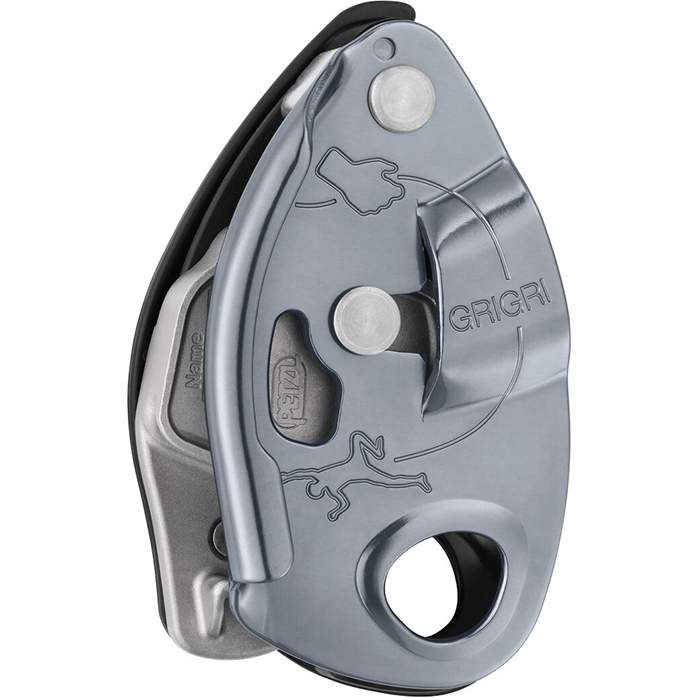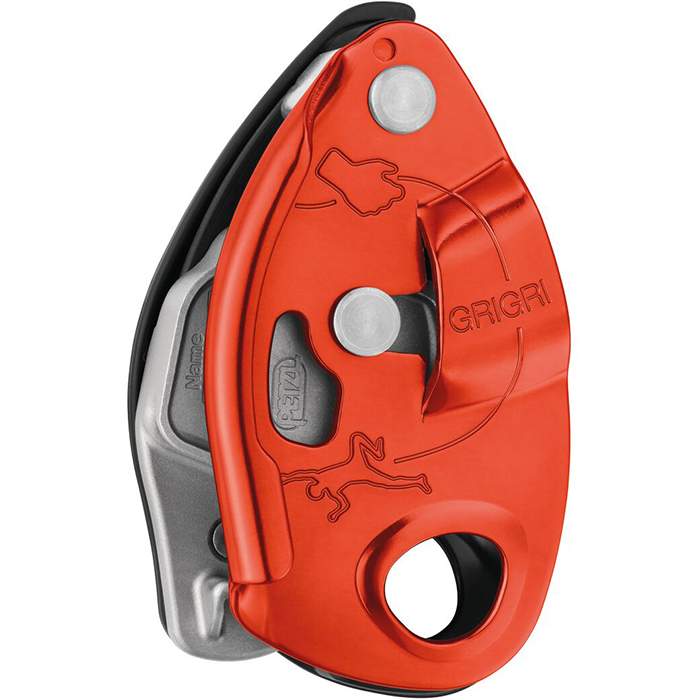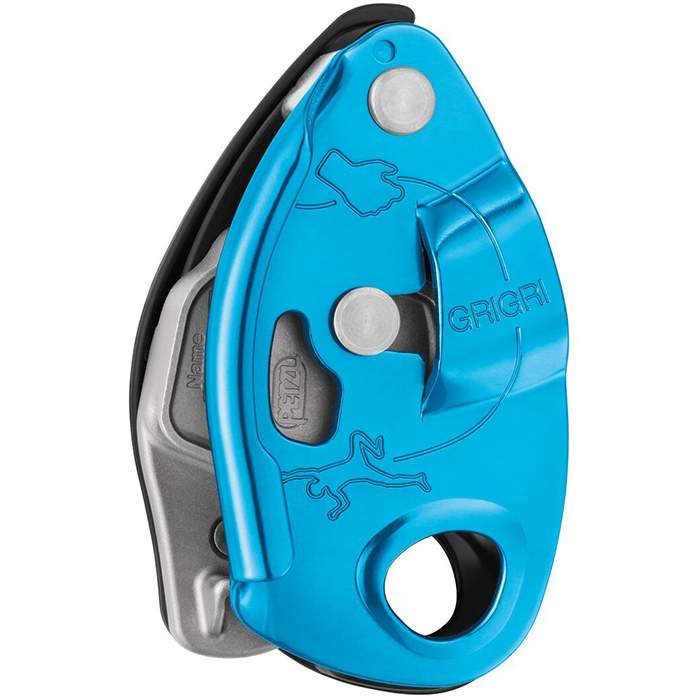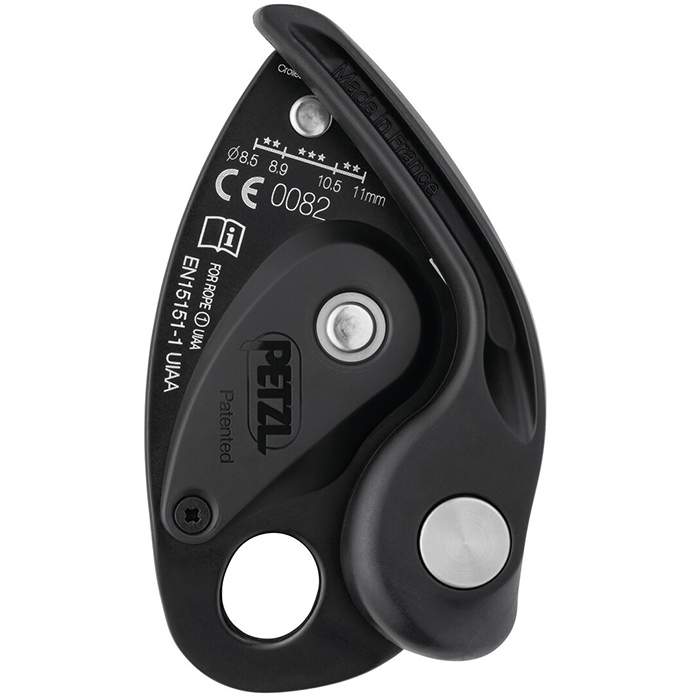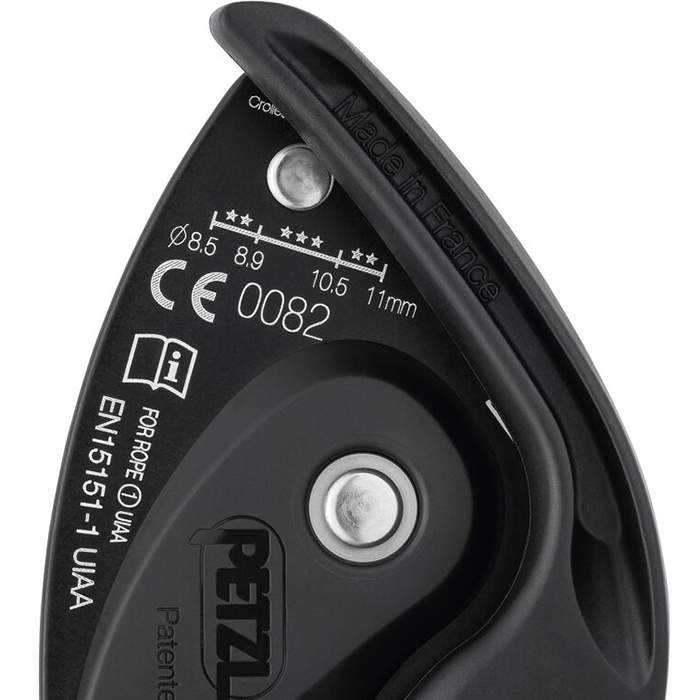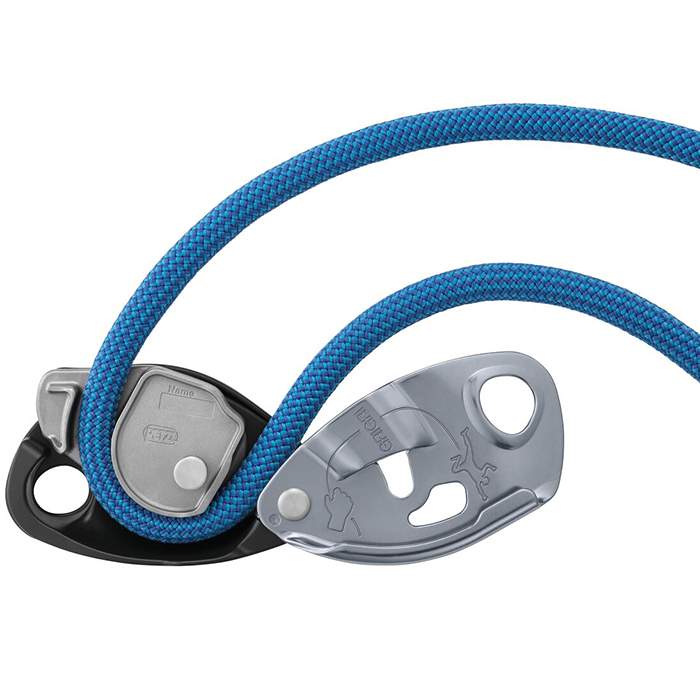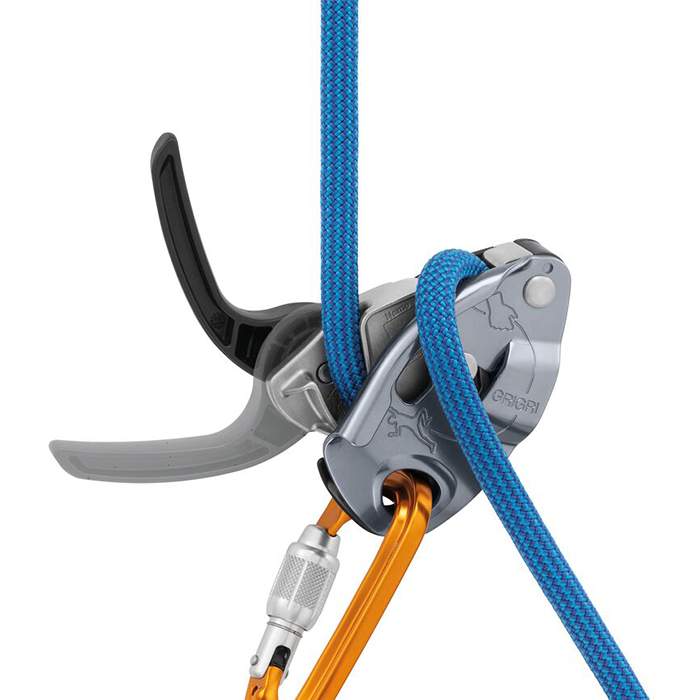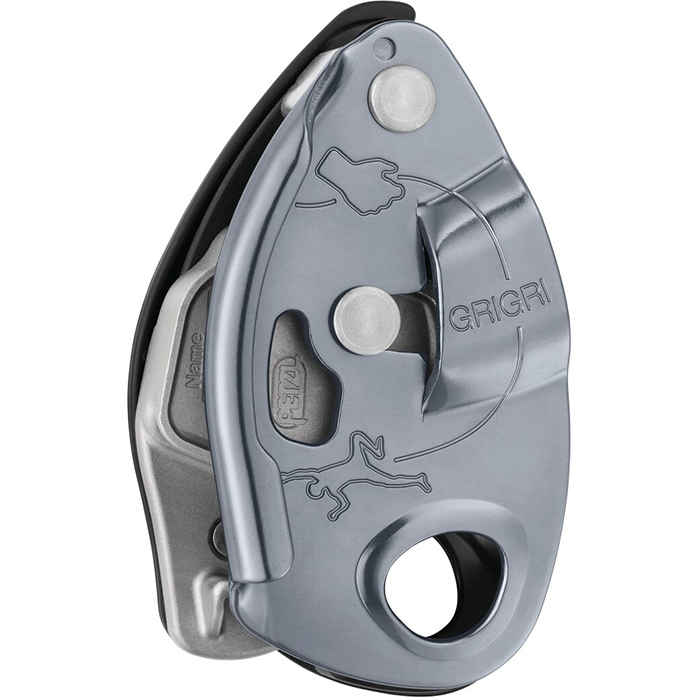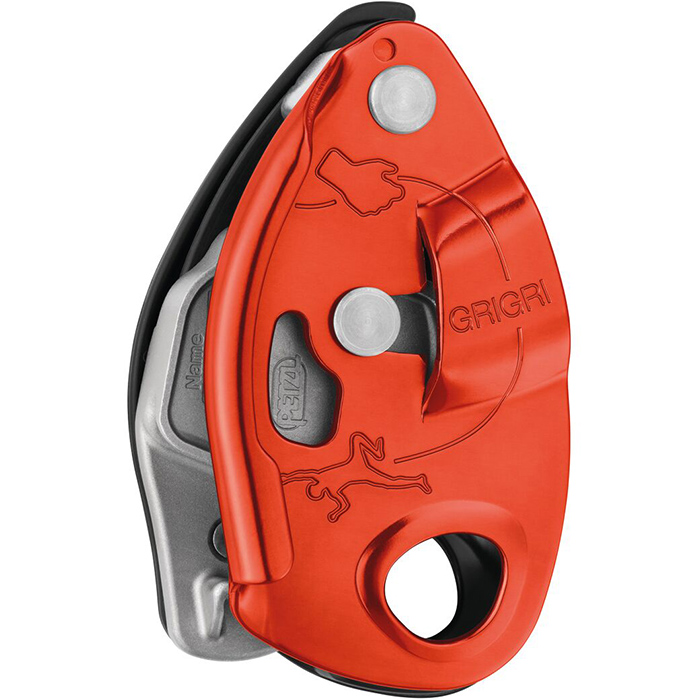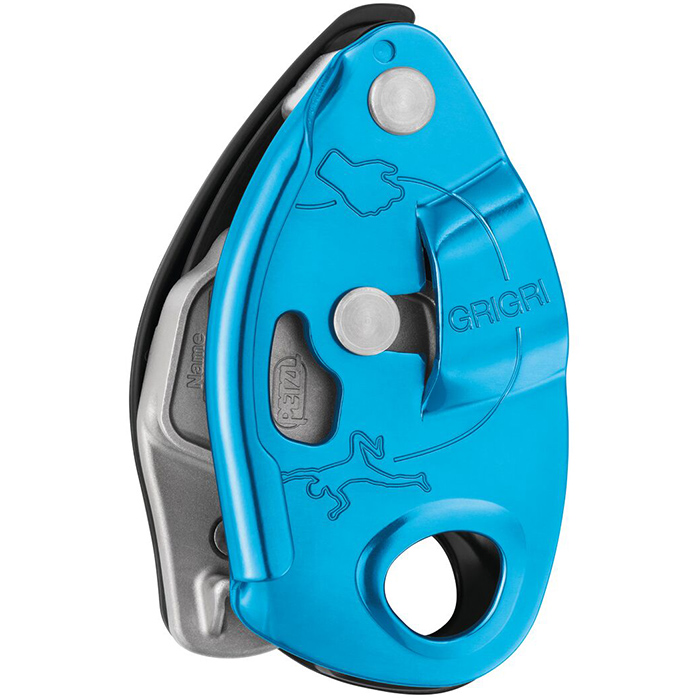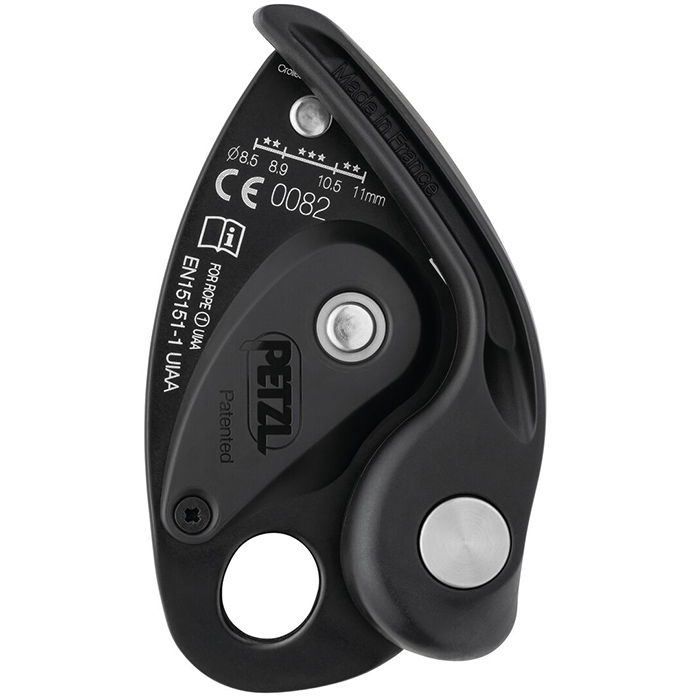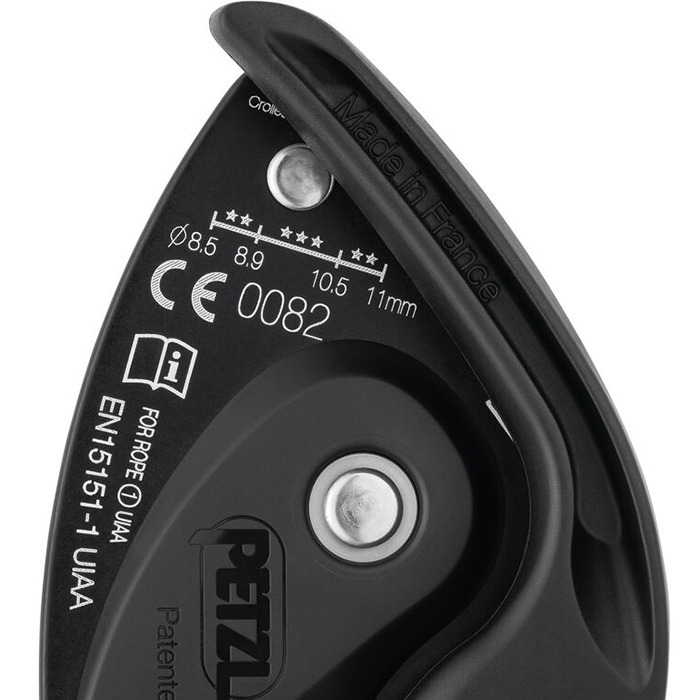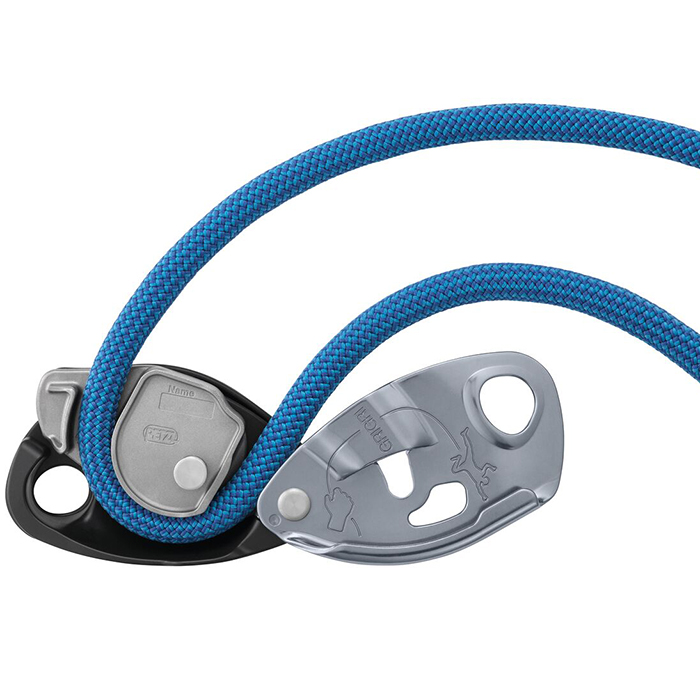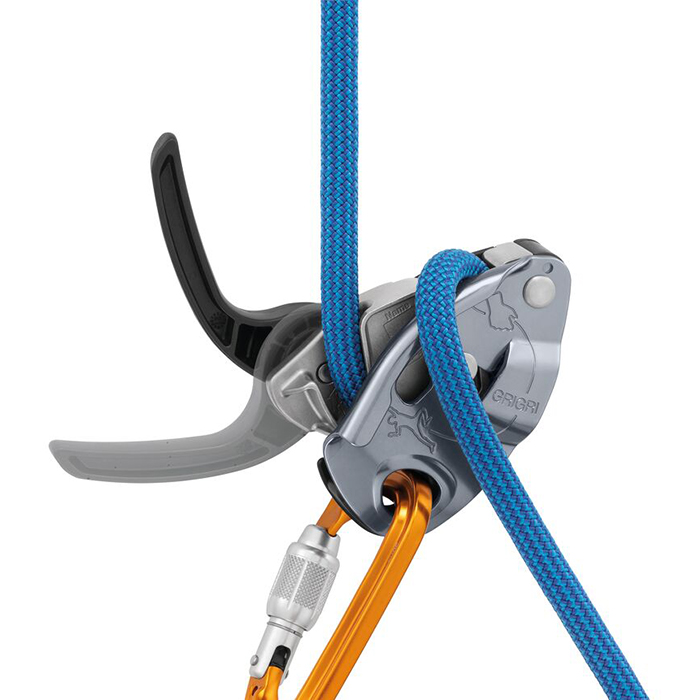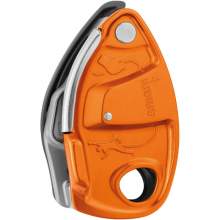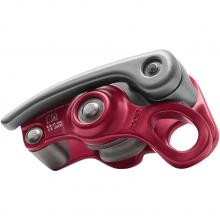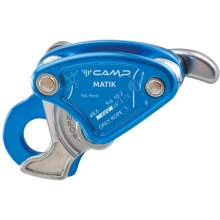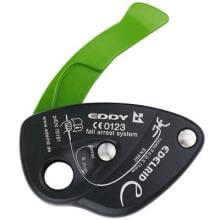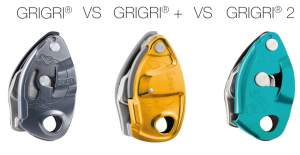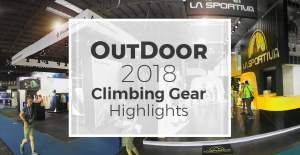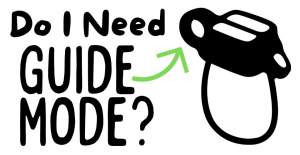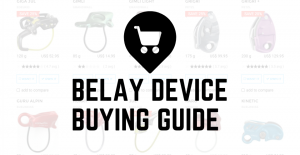GriGri
Description
Designed for the experienced belayer, the GRIGRI is a belay device with assisted braking designed for belaying both in the gym and at the crag. Compact and lightweight, it can be used with single ropes from 8.5 to 11 mm. The assisted braking function improves comfort while belaying, holding a climber or catching a fall. The design of the handled camming mechanism enables exceptional descent control.
- Belay device with assisted braking, compatible with a broad range of single rope diameters, for both gym and crag:
- feeding slack and catching falls are done using standard belay techniques; always keep a hand on the brake-side of the rope.
- the assisted braking function is activated when a climber falls, the device pivots, the rope tightens and the cam pinches and blocks the rope. Holding the brake side of the rope helps engage the cam, therefore it is important to always hold the brake side of the rope.
- compatible with dynamic single ropes 8.5 to 11 mm, optimized for 8.9 to 10.5 mm.
- rope installation diagram engraved on both the interior and exterior of the device. - Exceptional comfort during descents:
- the ergonomic handle allows you to easily lower someone.
- smooth descent control is achieved thanks to the progressive action of the cam. - Designed for experienced belayers:
- simple to use for belaying both lead or top-rope climbers.
Designed for the experienced belayer, the GRIGRI is a belay device with assisted braking designed for belaying both in the gym and at the crag. Compact and lightweight, it can be used with single ropes from 8.5 to 11 mm. The assisted braking function improves comfort while belaying, holding a climber or catching a fall. The design of the handled camming mechanism enables exceptional descent control.
- Belay device with assisted braking, compatible with a broad range of...
Retail price
When you click a link below and then checkout online, no matter what you buy (climbing gear or not), we get a small commission that helps us keep this site up-to-date. Thanks!

Device Type  |
Brake Assist - Mechanical |
Weight (g)  |
175 g |
Belay Brake Assist  |
Yes |
| Rope Options | 1 rope only |
Guide Mode  |
1 follower only |
Teeth  |
No |
Rope Range (mm)  | 8.5 mm
- 11.0 mm
, optimized for 8.9 mm
- 10.5 mm
Single: 8.5 - 11 |
Certification  |
CE, EN, UIAA |
Ditching the “2” in their iconic belay device’s name, Petzl has updated this assisted-braking classic by expanding the range of ropes it can accommodate: from 8.5mm to 11mm. In other words, what was formerly the Grigri 2 is now just the Grigri (it has the 2’s smaller size viz. the original model, and weighs 6.2oz), and it’s been retooled to work with the new ultra-skinny single ropes. I’ve been a Grigri convert since I first laid hands on one in 1992, so was well versed in the device’s pros, cons, and usage as I tested. From crag belays, to simul-rapping, to multi-pitch sport, to gym sessions, the Grigri was just as smooth, amazing, and reliable as ever; its métier is dogging sessions, catching long, dynamic falls, and lowering, where the lever gave buttery action without fail.
The Petzl GriGri is the best and most popular active assist braking device on the market today. If you are looking to add a little bit of security to your belaying beyond the simple tube, this is the device we would recommend before any other.
So, the 2018 updates are useful, the broader range of rope sizes is great and the up-rated cam does make a difference to the smooth action when lowering. The design tweaks on the plate fold over and handle are for aficionados and of course you should read all the documentation, watch the youtube videos and even practice using it if you are new to using a GriGri, and if you are thinking of upgrading from your original one this is well worth the money.
Helpful description, How to inspect GRIGRI 3 and also how to make it long lasting.
How to use the GRIGRI 3 (good and bad), various instruction of GRIGRI 3 including inspection and techniques.
A checklist to monitor your belay device, it helps you to know when to retire your belay device.
Describes with words and helpful photos, how to protect your belay device and other metal equipment.


